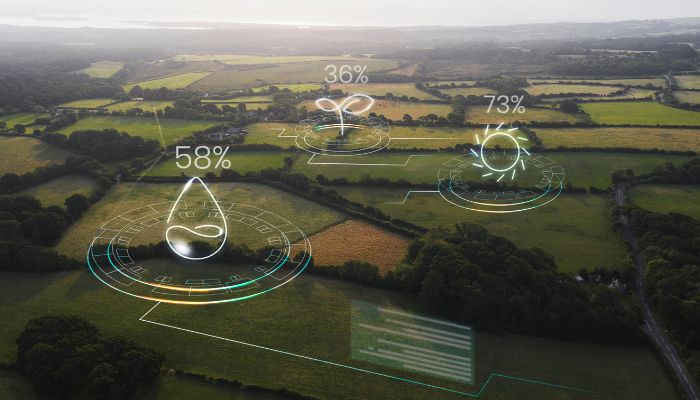Scaling Agritech for Innovation, Inclusion, and Impact
India’s agricultural sector, often described as the backbone of its economy, employs nearly 43% of the country’s workforce and contributes around 18% to the national GDP. However, for decades, the sector has grappled with inefficiencies, fragmented supply chains, climate variability, and low productivity. Agritech — the convergence of agriculture and technology — has the potential to revolutionize Indian agriculture by making it more data-driven, sustainable, and efficient. With over 1,000 Agritech startups emerging in India in the last few years and investments in the sector crossing $500 million in 2023 alone, the momentum is unmistakable.
A recent Times of India article titled The Hottest Jobs in India 5 Years From Now (May 16, 2025) highlighted Agritech as a key growth area, forecasting roles such as agricultural data scientists, AI agronomists, and sustainability consultants among the most in-demand professions by 2030. This recognition reflects Agritech’s potential not just to reshape agriculture, but also to drive employment and skill development across the country.
Persistent Challenges in the Agritech Landscape
Despite this optimism, several structural and operational challenges continue to hinder the full potential of Agritech in India. A wide digital divide and low levels of technology adoption among small holder farmers restrict the reach of innovation to more affluent or better-connected regions. Fragmented landholdings make it difficult to achieve economies of scale, while unreliable rural internet connectivity hampers access to digital services and advisory platforms.
Compounding these issues is a trust gap between traditional farmers and technology providers, driven by limited digital literacy and awareness. Regulatory uncertainties around land records, pricing mechanisms, and agri-finance policies vary widely across states, creating additional friction. Overcoming these challenges requires collaborative efforts involving government policy reform, infrastructure development, grassroots education, and context-sensitive innovation.
Related Reads
Industry Outlook: India’s Tourism Sector
Current Landscape of Agritech in India (2025)
Today, India’s Agritech ecosystem is rapidly evolving, with innovation permeating the entire agricultural value chain. Startups and established companies are leveraging the Internet of Things (IoT), artificial intelligence (AI), drones, blockchain, and big data to enhance productivity, resilience, and transparency.
Precision agriculture is one of the most impactful trends. Through data from sensors, drones, and satellite imagery, farmers receive real-time insights for crop planning, soil health, irrigation, and pest management. Startups like Fasal, CropIn, and DeHaat are leading this charge, equipping farmers with predictive analytics for smarter decision-making.
Supply chain and market linkage platforms such as Ninjacart and AgroStar are streamlining farm-to-market logistics, reducing post-harvest losses, and providing direct access to buyers — eliminating intermediaries and ensuring fairer prices.
In Agri-fintech, companies like Samunnati and AgriBazaar are offering tailored financial services, including credit, insurance, and payments, often integrating digital KYC and remote monitoring to serve previously unbanked farmers.
Additionally, digital advisory and input delivery platforms are transforming how farmers receive crop recommendations, weather forecasts, and input procurement. With increasing smartphone penetration and digital literacy campaigns, farmers in remote areas are gradually being integrated into this digital ecosystem.
The Road Ahead: Agritech in India (2025–2030)
Looking forward, the Indian Agritech industry is expected to witness exponential growth, driven by evolving consumer demand, enhanced digital infrastructure, proactive government support, and increasing investor confidence. According to industry projections, the Indian Agritech market is poised to expand from approximately $3 billion in 2025 to over $24 billion by 2030.
Key to this growth will be the widespread adoption of AI and data-driven agriculture, enabling precise decision-making and early detection of risks. Predictive analytics will not only improve yield forecasts but also optimize resource usage — a critical step toward sustainable farming.
Government initiatives, such as the Digital Agriculture Mission and increased backing for Farmer Producer Organizations (FPOs), will help build scalable ecosystems around farmers. The expansion of the e-NAM (electronic National Agriculture Market) platform and enhanced interoperability between state and central digital agriculture systems will further improve transparency and efficiency in agri-trade.
As climate change increasingly disrupts traditional practices, Agritech will play a key role in promoting climate-smart agriculture — from water-efficient irrigation and regenerative practices to carbon sequestration. Startups aligned with sustainability goals are poised to attract growing attention from both public and private stakeholders.
Emerging Careers in Agritech in India
- Agricultural Data Scientist: Uses AI and big data to analyse crop patterns, soil conditions, and climate models to optimise agricultural productivity.
- AI Agronomist: Combines agronomy knowledge with artificial intelligence to develop smart crop planning and risk assessment tools.
- IoT Solutions Engineer (Agritech): Designs and implements IoT-based systems for real-time monitoring of farm parameters like soil moisture, temperature, and pest activity.
- Agri-Supply Chain Analyst: Uses logistics analytics and digital tools to streamline farm-to-fork distribution, reduce waste, and improve profitability.
- Sustainability Consultant (Agriculture): Advises agribusinesses and farmers on regenerative farming practices, water conservation, and compliance with carbon footprint standards.
- Drone Technician for Agriculture: Operates and maintains drones used for aerial mapping, crop spraying, and health assessment.
These emerging roles not only reflect the industry’s growing tech sophistication but also offer exciting new career paths for India’s youth, particularly those from rural and semi-urban areas. India stands at a crucial inflexion point in its agricultural journey. The coming decade presents a unique opportunity to redefine farming through technology and innovation, turning traditional pain points into engines of growth. Agritech offers a powerful solution to the longstanding challenges of inefficient supply chains to unsustainable use of resources. It will also create new economic opportunities and career paths in rural India.
However, realising this vision requires a concerted push from all stakeholders — government bodies, startups, educational institutions, financial partners, and most importantly, farmers themselves. With the right policy framework, inclusive innovation, and a commitment to building trust and capacity at the grassroots, Agritech can not only modernise agriculture but also enhance food security, boost rural incomes, and position India as a global leader in sustainable, technology-driven farming.






